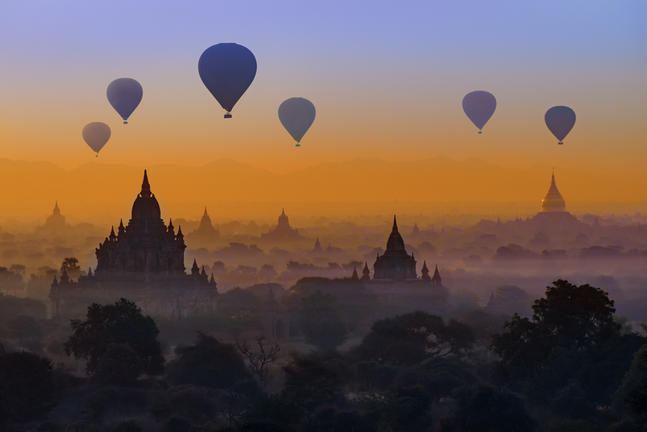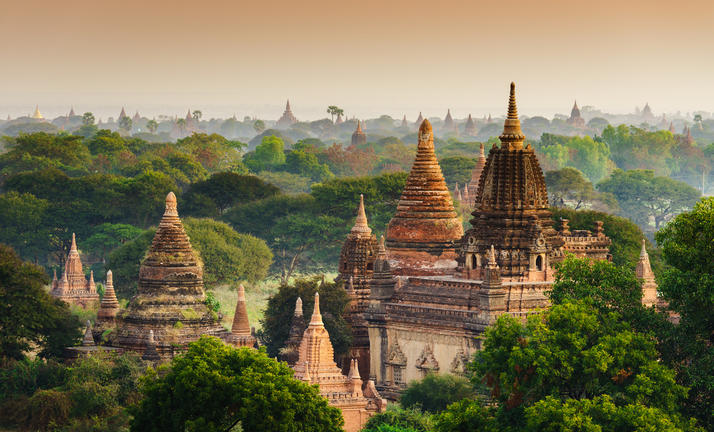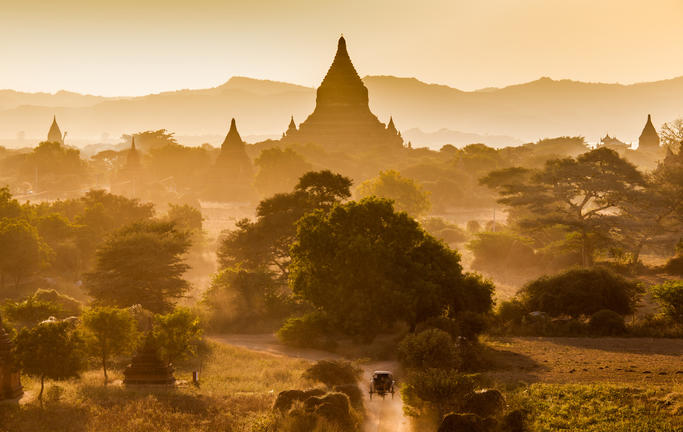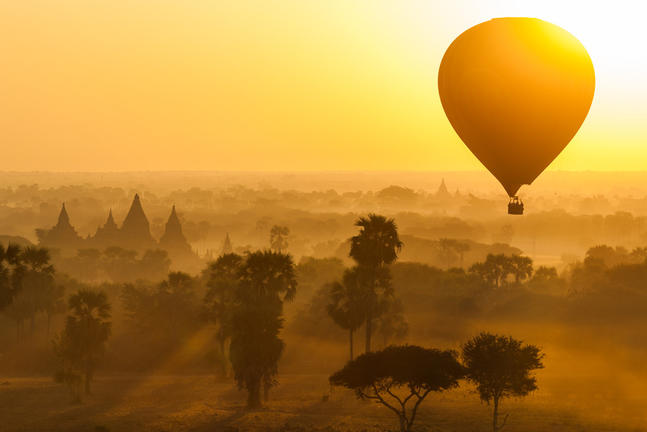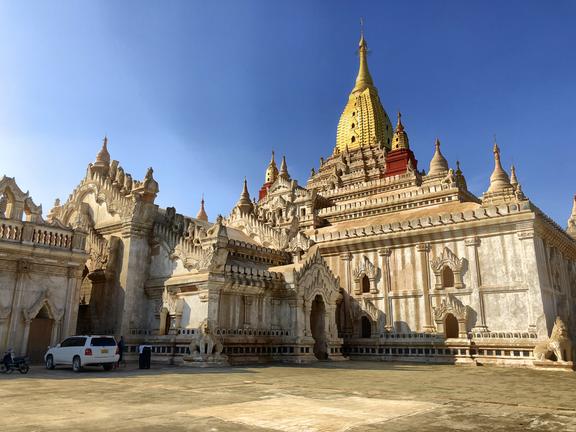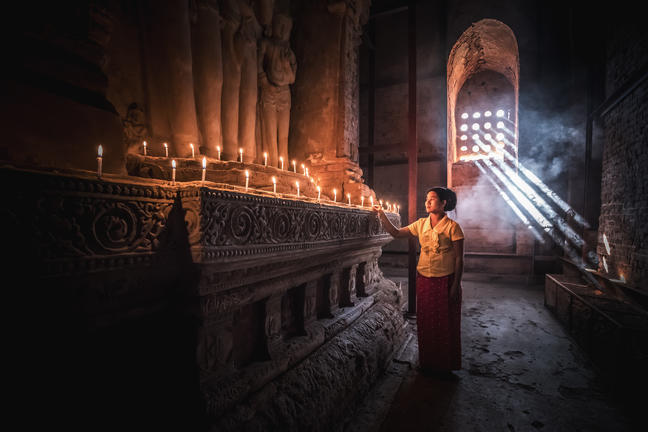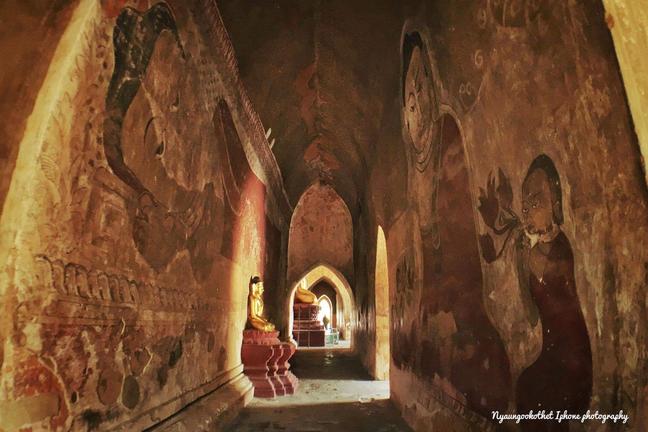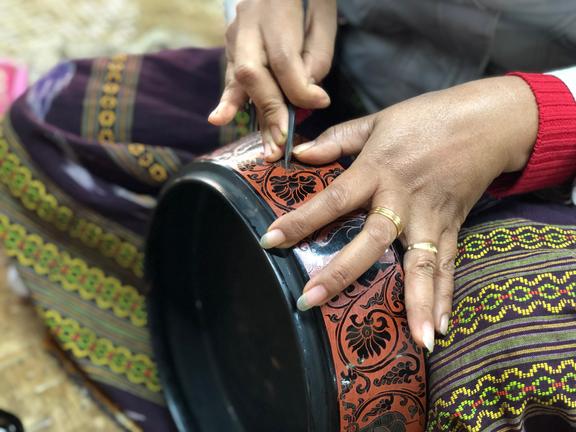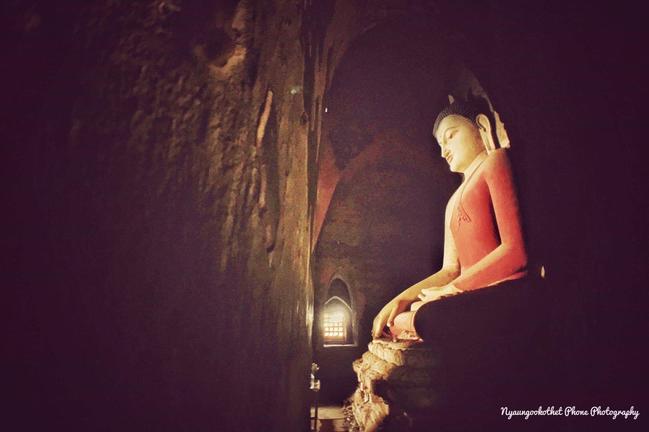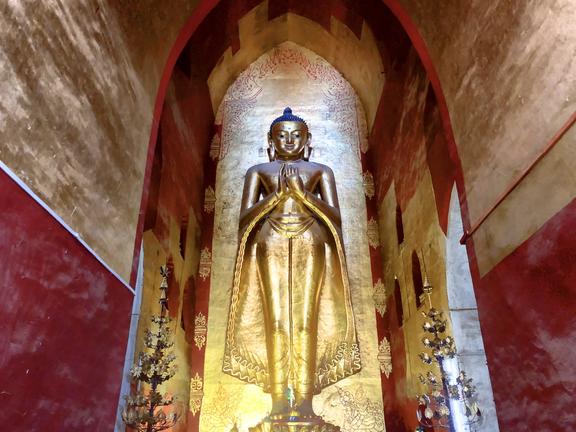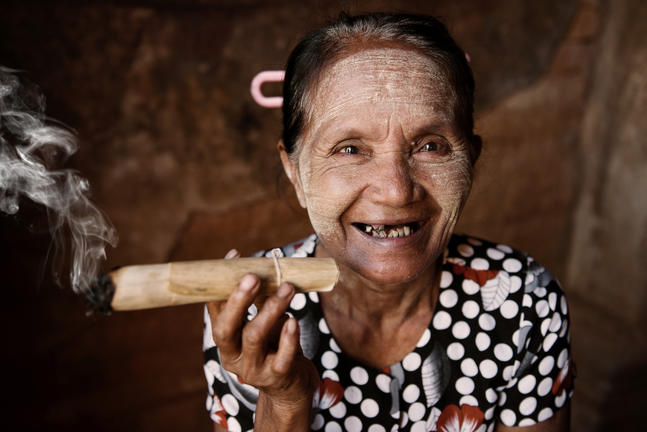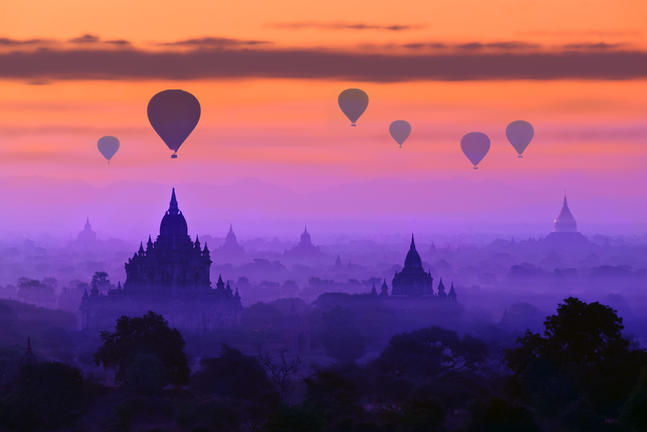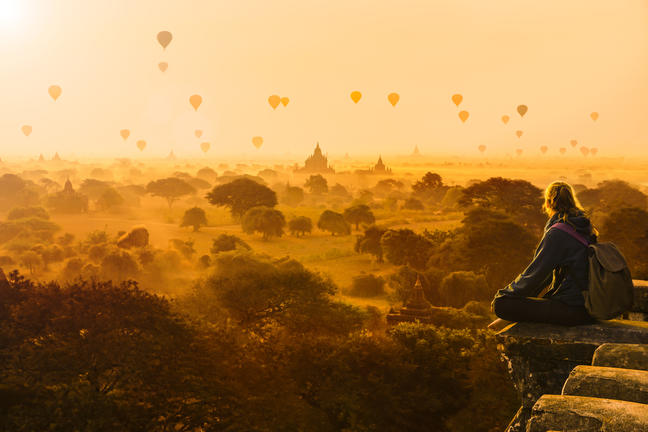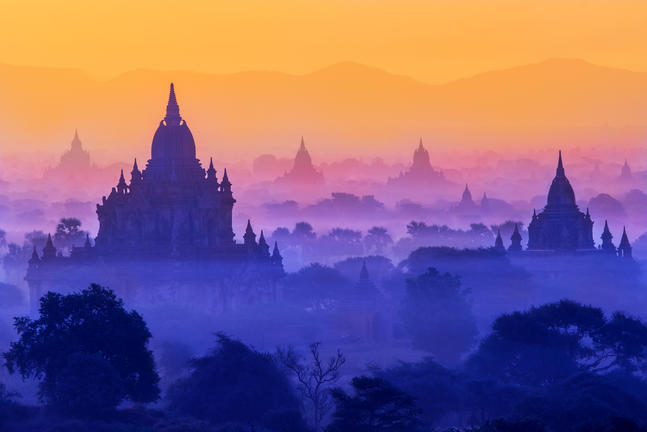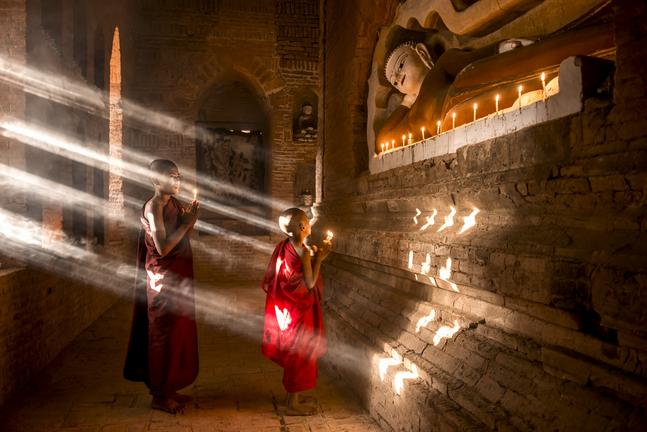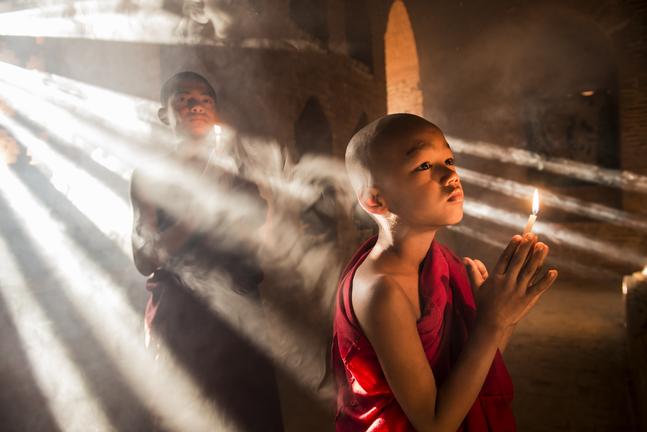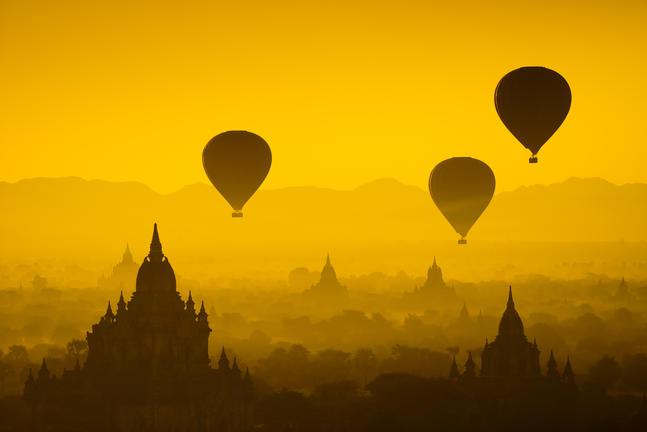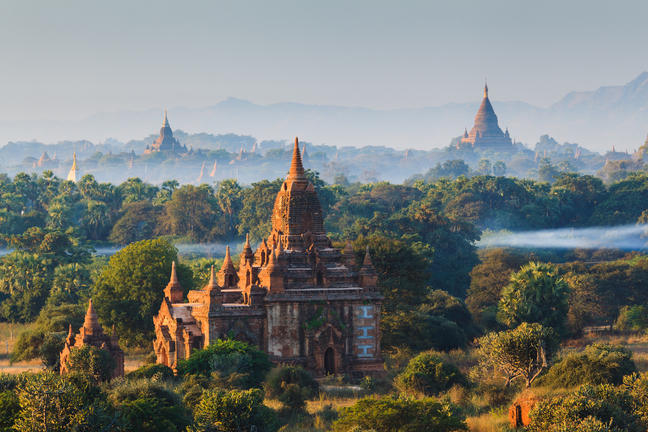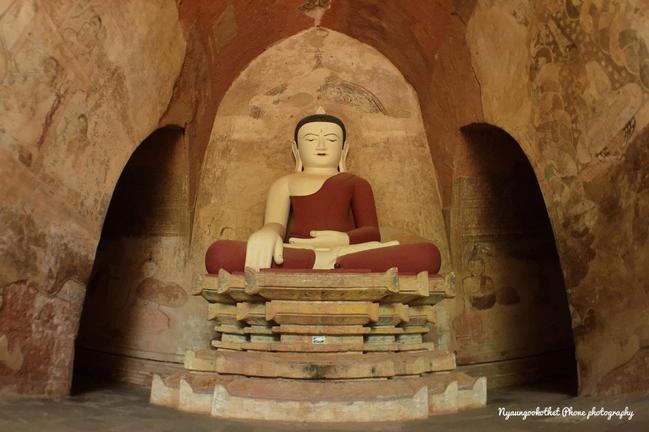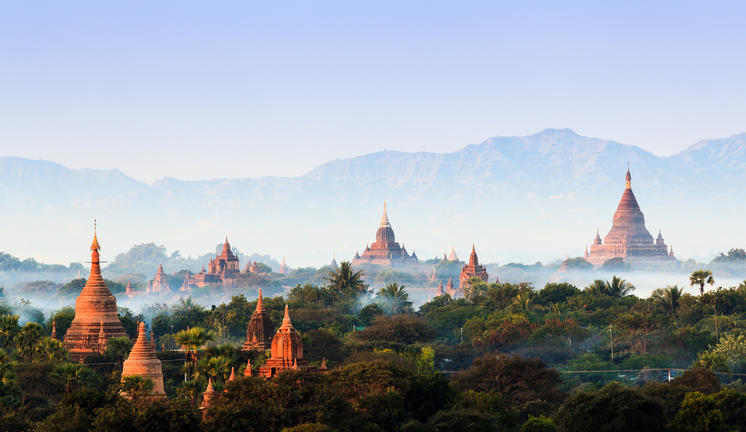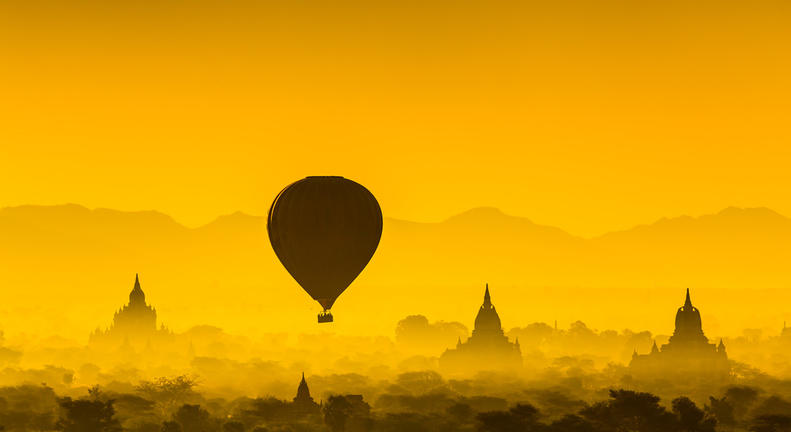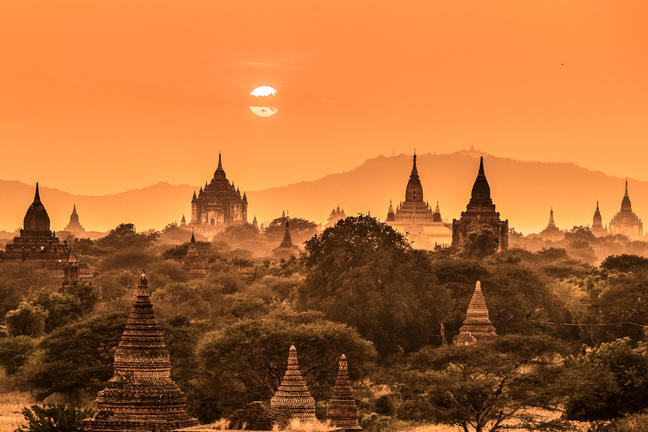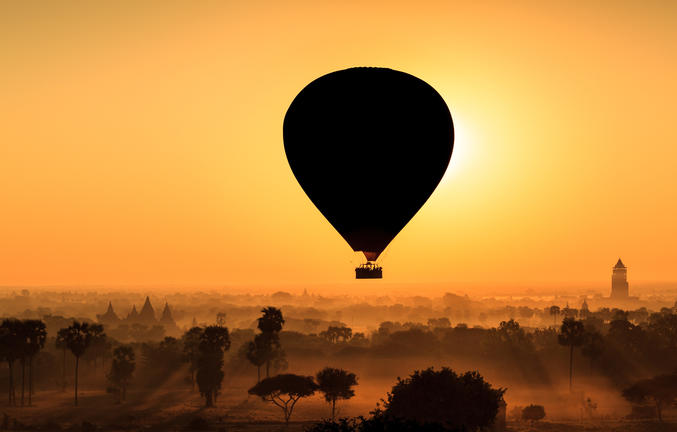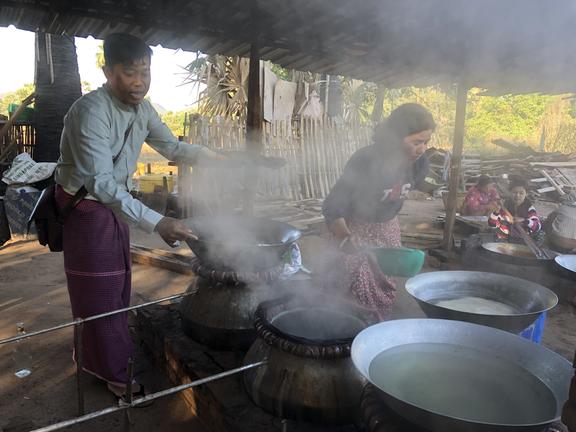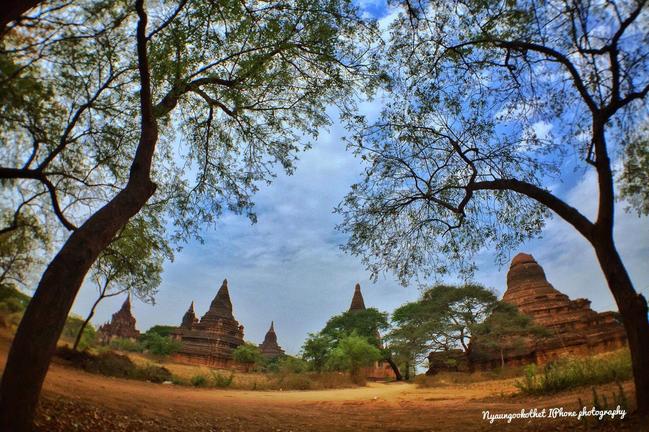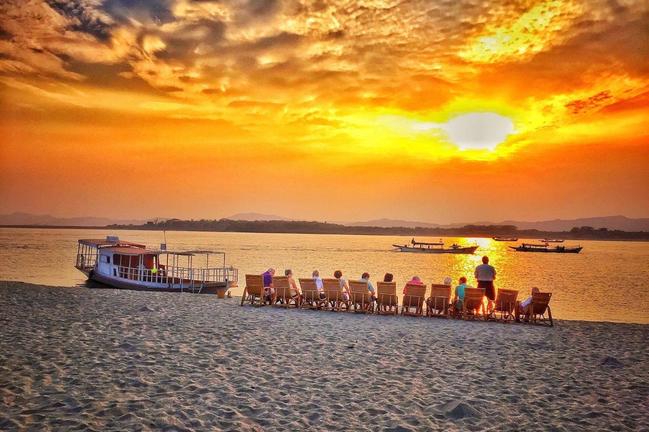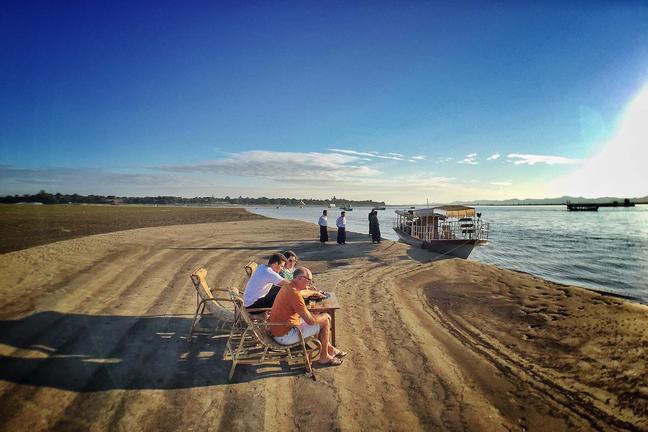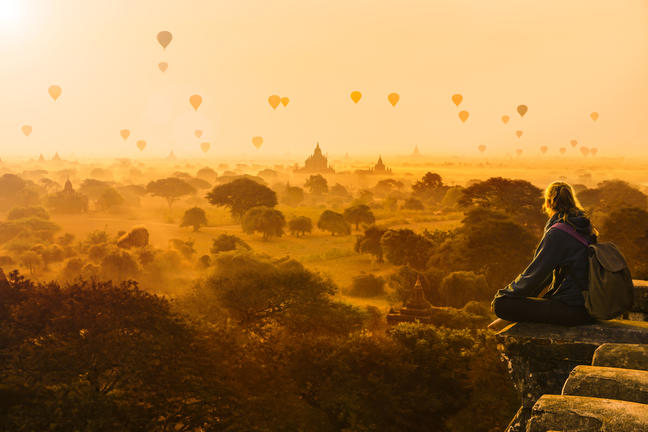Thousands of temples, stupas and monuments in astounding shapes and sizes were built over two and a half centuries by the earliest Myanmar kings in the glorification of their religion. The monuments are packed in 40 km² (16 miles²) of land, rust colored plains flanked by the great Ayeyarwaddy River in heart of the country. Rival in scope and historical significance to the world heritage sites of Angkor Wat in Cambodia or Borobudur in Indonesia, Bagan is not to be missed. A visit here is undoubtedly one of the most memorable travel highlights in Myanmar.
The kings of Bagan
From the 11th to the 14th centuries, Bagan was the earliest unified seat of Buddhism in Myanmar. King Anawratha is credited as the founder in 1044 AD, using Buddhism as a tool to unite the people and sparking the royal building trend. Architects, artists, craftsmen and slaves were brought from nearby countries to create temples with walls as thick as a house, stupas covered in elaborate stone reliefs, and pagodas with intricate murals of the Buddha’s reincarnated lives.
The twelve kings following Anawratha would each try to outdo the last, the result being a spectacular legacy of religious monuments. Despite the tolls of weather and neglect, many structures have survived well to the current day. Mosaic artwork covers some buildings, gold leaf or carvings on others, and vines over crumbling stone facades on still more. Depending on how one defines and counts the structures, numbers range from 2,100 to 4,400 temples in the heart of the archaeological site. Lenient regulations mean visitors can still climb the staircases of the tallest stupas to enjoy views the temple-studded landscape in all its glory. Watching the sun illuminate the outlines of the ancient ruins in the mist of dawn or dusk is yet another breathtaking experience of Myanmar. It’s no surprise that Bagan remains one of the most fascinating archaeological sites in all of Southeast Asia. Bagan was once one of the most glorious Burmese kingdom with trading relations extending to the ancient empires of India, Ceylon and Khmer. Other Myanmar Kingdoms such as at Thaton in today’s southern Myanmar were overrun by Bagan, and their culture and manpower absorbed into the Bagan Kingdom. In the late 14th century, the Bagan Kingdom abruptly scattered to the winds, purportedly with the arrival of the Mongols under Ghengis Khan. Its monuments remain, however, and have defied the ravages of time and nature. The majestic vestiges of the kingdom are ranked by many today as one of the great wonders of the world.
Even the great Marco Polo made reference to Bagan in The Description of the World, the narrative of his two and a half decade long odyssey into the Orient and beyond: “The towers are built of fine stone, and one has been covered with gold a finger thick, so that the tower appears to be of solid gold. Another is covered with silver in a similar manner and appears to be made of solid silver…They make one of the finest sights in the world, being exquisitely finished, splendid and costly. When illuminated by the sun they are especially brilliant and can be seen from the great distance”.
